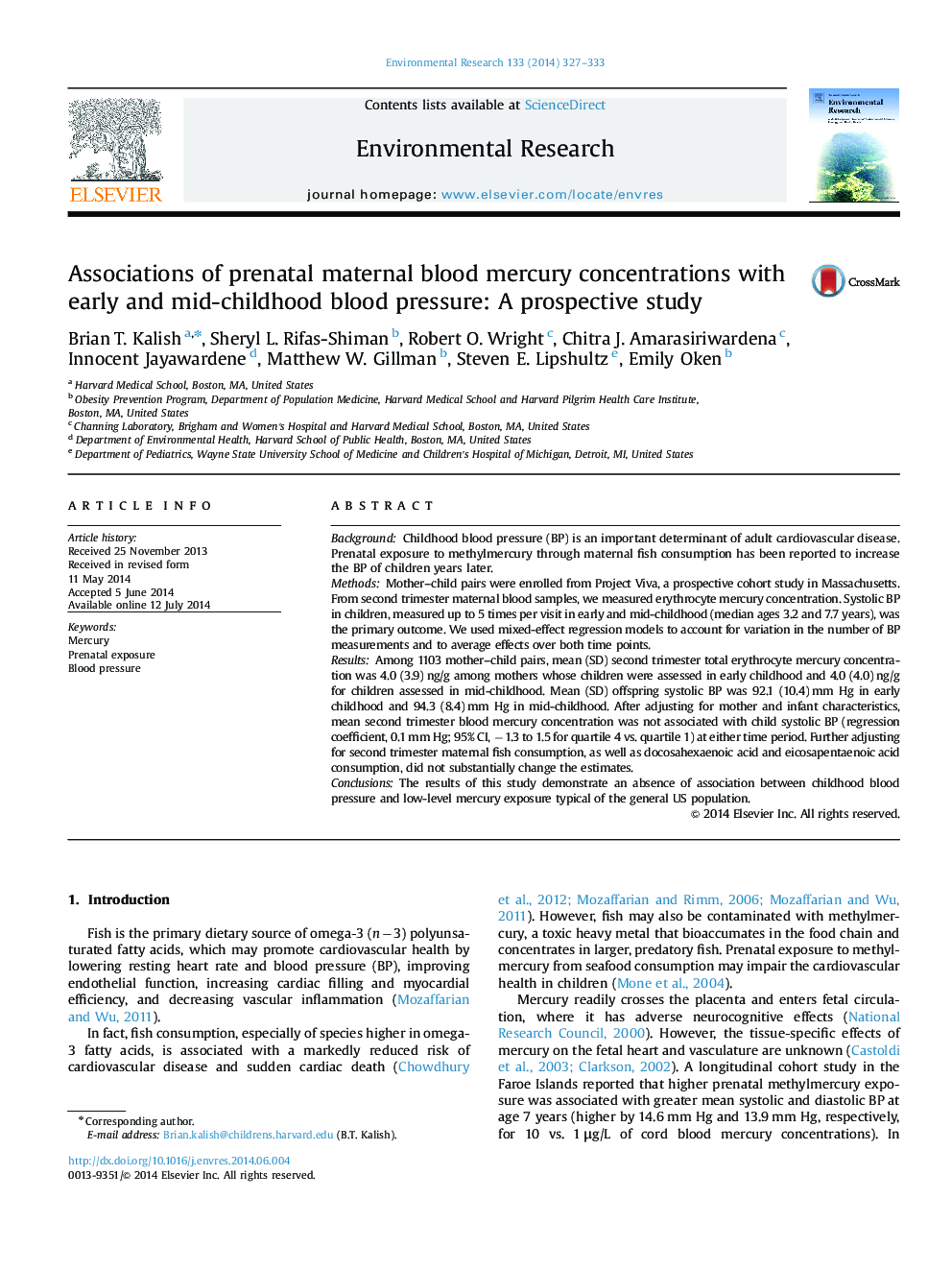| کد مقاله | کد نشریه | سال انتشار | مقاله انگلیسی | نسخه تمام متن |
|---|---|---|---|---|
| 4469720 | 1622568 | 2014 | 7 صفحه PDF | دانلود رایگان |
• We studied participants in Project Viva, a prospective pre-birth cohort study.
• We found an association between DHA+EPA intake and blood mercury level.
• We did not find an association between child blood pressure and mercury exposure.
BackgroundChildhood blood pressure (BP) is an important determinant of adult cardiovascular disease. Prenatal exposure to methylmercury through maternal fish consumption has been reported to increase the BP of children years later.MethodsMother–child pairs were enrolled from Project Viva, a prospective cohort study in Massachusetts. From second trimester maternal blood samples, we measured erythrocyte mercury concentration. Systolic BP in children, measured up to 5 times per visit in early and mid-childhood (median ages 3.2 and 7.7 years), was the primary outcome. We used mixed-effect regression models to account for variation in the number of BP measurements and to average effects over both time points.ResultsAmong 1103 mother–child pairs, mean (SD) second trimester total erythrocyte mercury concentration was 4.0 (3.9) ng/g among mothers whose children were assessed in early childhood and 4.0 (4.0) ng/g for children assessed in mid-childhood. Mean (SD) offspring systolic BP was 92.1 (10.4) mm Hg in early childhood and 94.3 (8.4) mm Hg in mid-childhood. After adjusting for mother and infant characteristics, mean second trimester blood mercury concentration was not associated with child systolic BP (regression coefficient, 0.1 mm Hg; 95% CI, −1.3 to 1.5 for quartile 4 vs. quartile 1) at either time period. Further adjusting for second trimester maternal fish consumption, as well as docosahexaenoic acid and eicosapentaenoic acid consumption, did not substantially change the estimates.ConclusionsThe results of this study demonstrate an absence of association between childhood blood pressure and low-level mercury exposure typical of the general US population.
Journal: Environmental Research - Volume 133, August 2014, Pages 327–333
